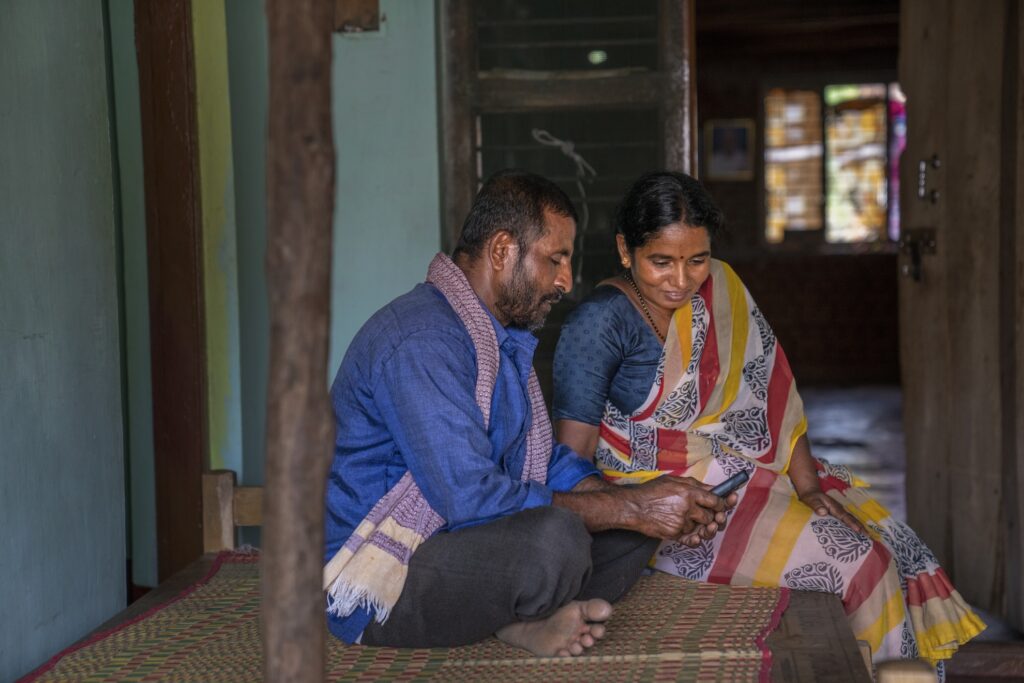
Today, three billion people globally still lack access to the internet — that’s more than a third of our planet’s population. At the same time, innovations like artificial intelligence are rapidly changing the digital economy. These innovations — if used well — have the potential to expand opportunity at never-before-seen levels. But the key challenge is we need to use them well.
That’s why yesterday’s decision by the United Nations is so exciting! On Sunday, the United Nations took a bold step toward building a more inclusive digital future for all. By approving the Global Digital Compact, the UN is boosting international cooperation on closing the digital divide and adopting shared standards on responsible digitization.
This is a big deal — especially for the global financial system. Today, two billion people lack basic services like credit, payments, savings, and insurance, or are poorly served by current providers. This makes it much harder to grow their businesses, provide for their families, and escape the clutches of poverty.
Payment systems built on the rails of digital public infrastructure (DPI) are helping to change that. The Global Digital Compact acknowledges the critical role of DPI in meeting its objectives, and commits to developing “safeguards for inclusive, responsible, safe, secure, and user-centered” DPI.
Digital payments are typically the first step taken by financially underserved individuals who are just entering the digital economy. While cash transactions are slow, insecure, and invisible to the financial system, digital transactions save time, improve safety, and build data footprints and financial histories that unlock access to higher-value financial services and economic opportunities.
Brazil and India have led the way in this area. Over the past decade, both countries have driven massive increases in financial inclusion thanks to their highly efficient and accessible DPI-based payment systems. Brazil’s Pix, which is free for individuals and much cheaper for merchants compared to credit cards, is now the fastest growing payment system in the world, processing more than 5 billion transactions per month. India’s Unified Payments Interface (UPI) has seen similar success, and now accounts for roughly half of all global instant payment transactions.
Scaling DPI requires a user-centered approach — and trust
The impressive success of these systems has fed an exciting idea: replicating and scaling similar DPI in emerging economies around the world, dramatically expanding financial access, affordability, and utility for the underserved.
The National Payments Corporation of India, which facilitates UPI, is already starting to do that. Peru and Namibia are the latest countries to partner with NPCI to develop UPI-like payment systems. But as this progress takes shape, it’s imperative that leaders scaling DPI carefully consider the unique characteristics of each place — and its people. Research from the Center for Financial Inclusion noted that “a ‘one-size-fits-all’ approach will likely never apply to DPI,” considering the diverse range of stakeholders involved in implementing DPI across its three foundational elements: identity, payments, and data exchanges.
DPI also provides the rails for a host of private sector innovations in financial services beyond payments, including e-commerce, insurance, cybersecurity and KYC, and more. While this innovation has great potential to expand economic opportunity, it’s critical that leaders focus on consumer benefits and the long-term viability of business models involving DPI, especially in state-driven approaches, to retain consumer trust and willingness to use these services.
For instance, the government of Kenya’s rollout of a new digital ID, the Maisha Namba, has raised concerns among citizens who cite a need for greater transparency on the specific benefits of the new ID and clearer commitments to quality implementation. These concerns also highlight how, without the right safeguards, government-led approaches to DPI risk abusing citizens’ data for surveillance, censorship, and political retribution — and further eroding citizens’ trust.
Building trust requires accountability from a network of government and social institutions. Leaders must also prioritize the needs of low-income and underserved populations, who are most at risk of being left behind. These populations face varying challenges based on where they live and what technologies they already trust, and these circumstances need to be fully understood for digital financial solutions to work for these groups.
Making data work for the data-less
Data is key to building that understanding. For digitization to truly benefit the most vulnerable groups, the data ecosystems that support DPI and other financial services must account for the unique needs and data footprints of low-income and underserved people.
For example, India’s Account Aggregator, a key pillar of India’s DPI that facilitates the digital exchange of financial data to financial service providers, remains skewed toward more affluent, higher-income customers. And across the world, consumers don’t know how their data is being used to make decisions that can impact their livelihoods and economic futures. We need to do a better job promoting transparency and protecting and prioritizing consumers’ privacy.
Fintech innovators have a major role to play in this area. Moffin, based in Mexico, is working to democratize access to data to help financial service providers make more informed and inclusive financial decisions. The company allows financial service providers to seamlessly ingest and utilize data from external data providers without the need for costly in-house resources. This can help financial service providers better know and serve underserved customers with limited or incomplete data trails.
To do more, we need to know more
The early success we’ve seen in Brazil and India to accelerate financial inclusion through DPI is encouraging. But we still have a long way to go to realize the vision laid out in the Global Digital Compact.
We urgently need more evidence on the implications of DPI for consumers, markets, and innovation. We need to systematically assess the most effective safeguards and regulatory conditions that allow for responsible and accountable DPI, and we need to know more about how consumers’ livelihoods are affected.
With this knowledge in hand, we can ensure digitization bridges economic divides instead of widening them, and encourage greater collaboration on consumer protection. The UN’s Global Digital Compact is a good starting point, but local leaders across sectors must take action, and turn principles into policies that allow innovation to happen responsibly.









